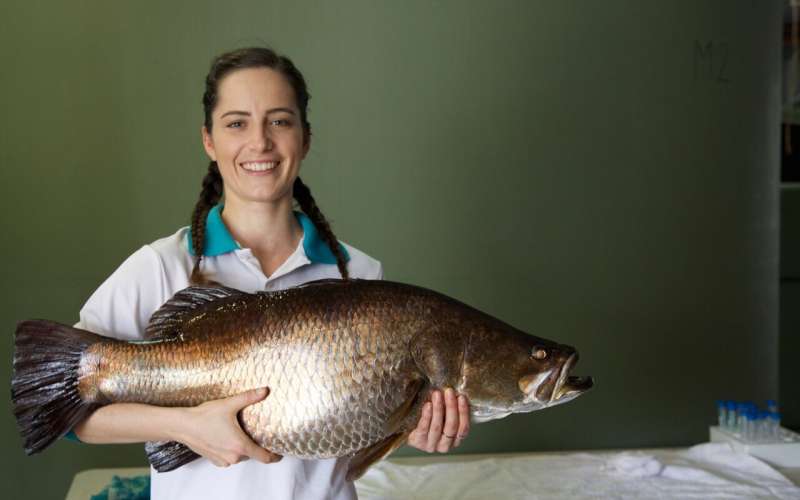Computational model estimates lifespan of any fish species using only its genome sequence

If a fishery manager could only know one thing about a fish species, it should be lifespan. But many species live out their lives on time scales much longer than we can observe. And even the short-lived species do a good job of hiding in the sea.
That's why researchers have developed a model to predict the lifespan of any fish species. They are a very diverse and numerous group. Bony fish alone comprise nearly 30,000 species, around half of all vertebrates. All we need to know to predict lifespan for any fish species is the genome sequence of a single individual.
One fish, two fish, old fish, new fish
Known lifespans of fish species range from less than one year for the pygmy goby to nearly 400 years for the Greenland shark. However, the Greenland shark's genome hasn't been sequenced yet, so we can't tell you for sure.
Dr. Alyssa Budd is a postdoc with our Environomics Future Science Platform (FSP). She said lifespan can be used to help estimate sustainable harvests, extinction risk and even the invasion potential of a pest species.
"For example, we know long-lived species are likely to take a long time to reach sexual maturity. They have fewer offspring, with more investment in those offspring. This means we can roughly estimate things like the population growth rate of a species just from knowing its lifespan," Alyssa said.
"The problem is, we don't know lifespan for most fish species. And rules of thumb that typically work for mammals, like small body equals short lifespan, are much more complicated in fish. Even in closely related species lifespan can vary greatly. For example, the lifespan of different species of rockfish can range from about 10 years to over 200 years."
Estimating lifespan
Along with lifespan, the actual ages of individuals in a population are important to know for species management.
That's why previously our Environomics FSP developed a computational model to predict lifespan in mammals and other vertebrates and a DNA test to find out the ages of individual fish using only a tiny piece of fin tissue.
The lifespan prediction model uses a species genome sequence, sifting through the combinations of A, G, C and T to count the number of C-G sequences in gene promoters. These are the regions of DNA that determine if a gene becomes active or not. C-G sequences act like on/off switches and the number of C-G switches relates to how slowly the species ages.
Alyssa and her team from CSIRO and Curtin University have now expanded the lifespan model to apply more accurately to fish. Their research is published in the journal Molecular Ecology Resources.
"We added hundreds more fish species into the model. We also used gene promoter sequences that are fish-specific. Because these regions can be hard to find in the genome if you're trying to match them with a distantly related species," Alyssa said.
"We trained our model on fish species with known lifespans. And now we can put the genome of any fish species into the model to estimate its lifespan.
"Most genomes are available online in public databases, and there's been an explosion of species genomes published in the last few years. We only need one genome, of almost any quality, to predict the lifespan of a species."
More information: Alyssa M. Budd et al, Fish species lifespan prediction from promoter cytosine鈥恜hosphate鈥恎uanine density, Molecular Ecology Resources (2023).
Journal information: Molecular Ecology Resources
Provided by CSIRO



















